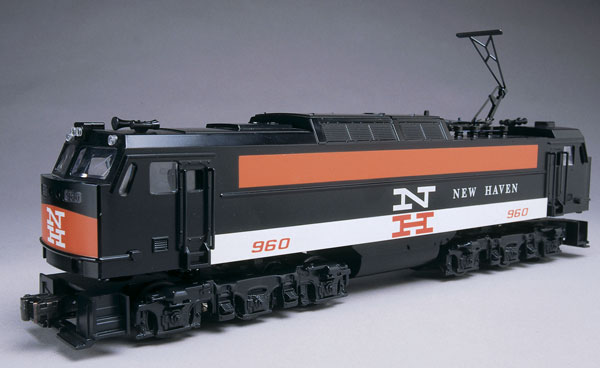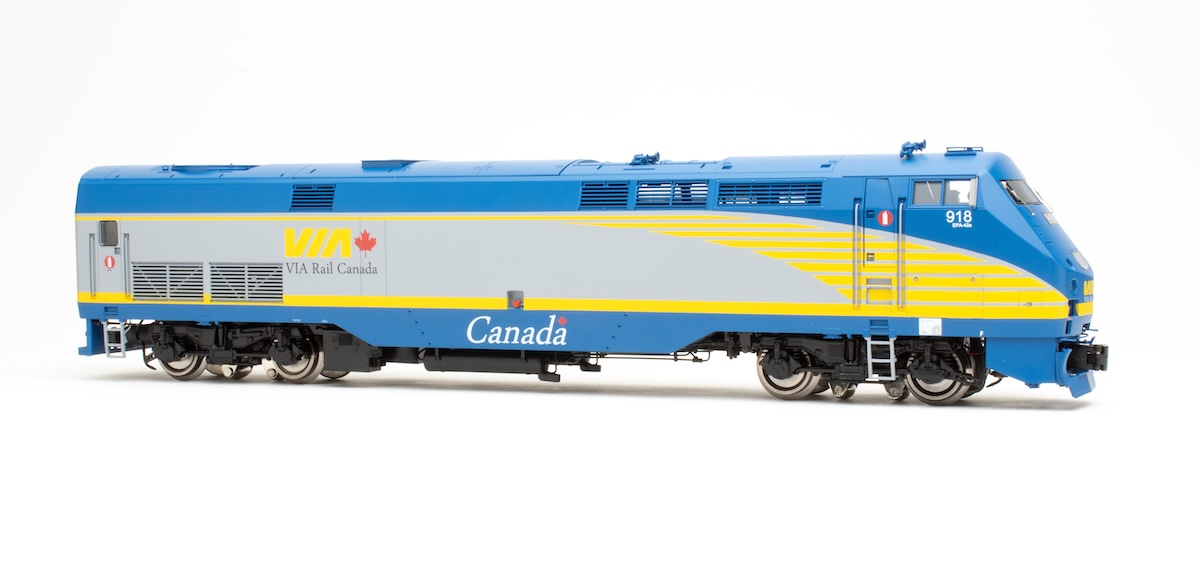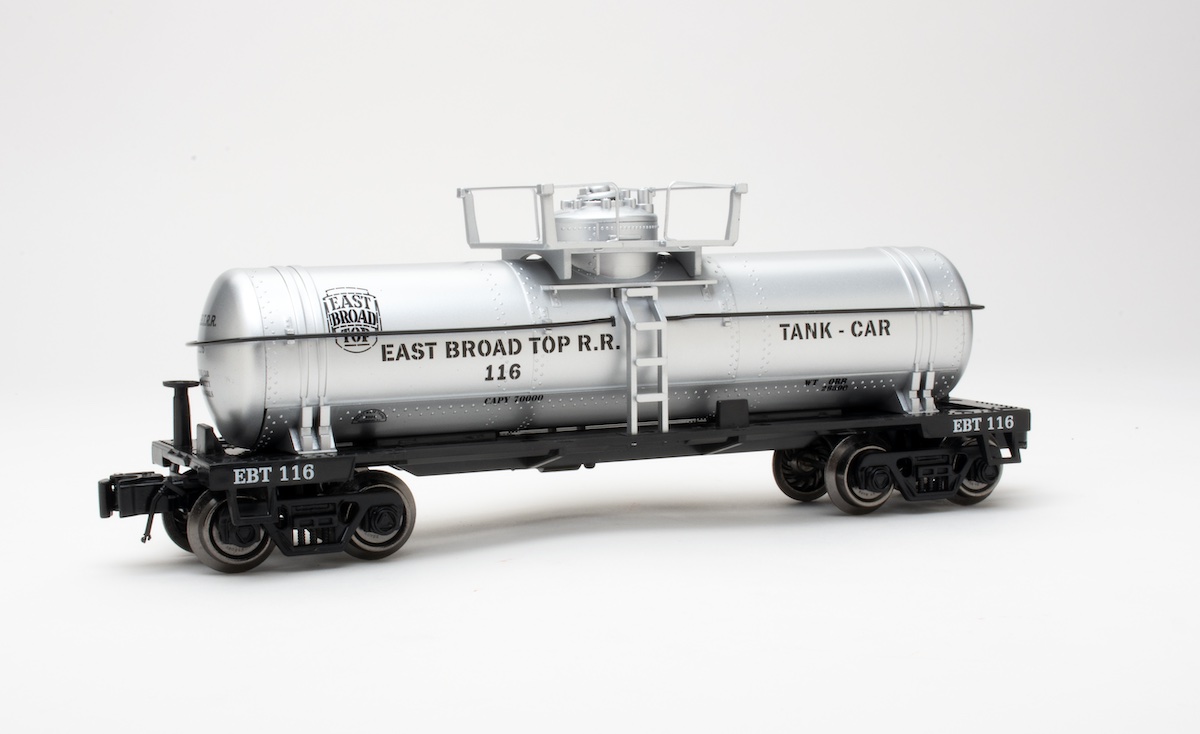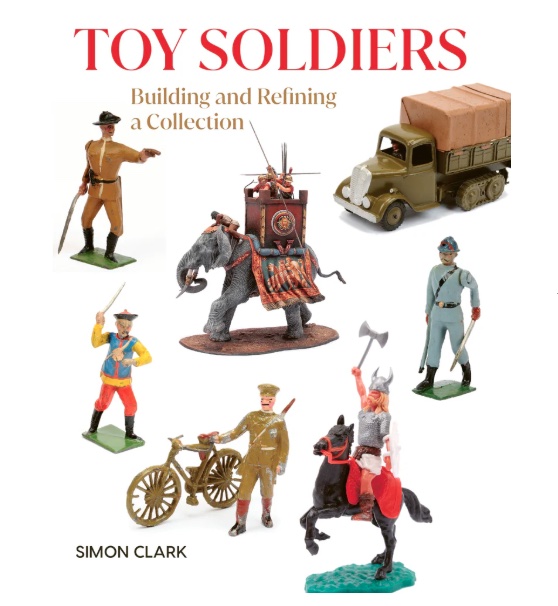The prototype E60 is a General Electric product that looked great, but which could hardly be called a commercial success. First fielded in 1972, only 34 were sold to U.S. rail carriers, and 39 were sold to the National Railways of Mexico (N de M).
In operation, tracking problems prevented Amtrak from embracing the locomotives, especially after the Federal Railway Administration restricted their speed limit to 90 mph (Amtrak wanted them for 120 mph service). In the end only Colorado’s Deseret Western, Arizona’s Navajo Mine RR, Amtrak, NJ Transit, and N de M used versions of this engine.
In the early 1970s Jerry Williams was riding the first wave of renewed interest in toy trains. He reasoned that if there was a solid market for his reproductions of prewar and postwar equipment, there might also be an untapped market for new, original locomotives. Jerry decided that the General Electric E60 would be a prime candidate.
Williams’ decision to offer the E60 was understandable. It was one of the newest prototype engines on the market, its two cabs it made it unique, it looked sharp in Amtrak’s flashy colors,and at 6,000 hp, it was one of the most powerful locomotives – diesel or electric – on the rails.
Originally offered as a body kit only, the product was popular enough for the firm to offer a two-motored version on a Train Master chassis in 1981. The third version of this engine was a single-motor model. This latest version of the E60 has several improvements that should make catenary enthusiasts very happy.
In the tradition of Williams, the locomotive has been offered in several road names, most of which never owned an E60 but have enthusiastic fans in the hobby. Previous renditions of the E60 include Amtrak, Burlington Northern, Conrail, New Haven, Penn Central, and the Virginian, while the current model is offered in Amtrak and New Haven.
The example we tested is the latest version in New Haven’s popular orange, white, and black scheme. The model’s upgrades include the return of a second motor, the addition of four more traction tires (for a total of eight), the addition of what Williams’ Larry Harrington calls a “dish” flywheel, and a modification to the frame. The frame modification allows the motors to ride lower which, in turn, lowers the height of the engine for less of a gap between the shell and trucks.
Considering that the tooling is more than 20 years old, this New Haven is a very detailed model that captures most of the main reference points shown in prototype pictures and diagrams. The model measures 16 inches coupler-to-coupler (roughly 64 feet in O scale) compared to the prototype’s 71 foot length. It is 4 inches tall (16 scale feet) compared to the prototype’s 141/2-foot height with pantographs locked down.
I was pleasantly surprised when I examined the engine up close. In spite of the double-ended design, it looks distinctively American and functional. Each cab is illuminated, and there are six plastic lenses (representing markers) and two number boards, also illuminated.
I was impressed with the hand grabs at each cab door. They are not simply cast in the mold, but could actually be grabbed by tiny O gauge hands! The pantographs are neat.
There are two pantographs over one cab. Supported by a spring, they can pop up so that the E60 can run in either direction and “look okay.”
I really liked the die-cast metal trucks. I expected the standard Williams SD45 truck the firm has used in other models like the Dash 9 or U33C, but this wasn’t the case.
Larry Harrington of Williams told CTT that these six-axle beauties had been developed for an E8 diesel that the company canceled. They look right at home on this electric!
Need some light on your layout? The fact that both cabs are illuminated will ensure layout visitors can follow the train in a dim light situation! Keeping in step with Williams’ emphasis on basic trains, the engine has an electronic horn, but the sound is a traditional bleep.
The geometric New Haven graphics are neatly applied and the colors suitably flat as opposed to the more glossy paint Williams has been known for.
For several hours we tested the engine with an 18-car freight train. It offered smooth acceleration and gentle stops, no matter how suddenly the power was cut. The test numbers were good. Operation of the 5 lb. locomotive was as smooth and quiet as any other Williams engine we’ve examined. The low-end speed average was 28.2 scale mph while the high speed average was 162.3 scale mph. Drawbar pull was 2.7 lbs. which equals roughly 100 pieces of modern, free-rolling rolling stock on straight and level track.
The Williams E60 is a solid performer commemorating a prototype locomotive that probably looked better than it ran. Don’t let that sway you, however. If you like electrics, then be sure to check out this upgraded model.















I have the williams new haven 960 E. I am looking for the pantograph that goes with this engine. Can any one help. Already checked with Bachmann to no avail.
I can't find one!!! ARRRG!! I want one in Amtrak. Bachman seems to not want to reissue these locos!
Thanks for the article – Going to try to find an E – 60 in Penn Central!
purchased one of these after reading review.loco is as good as they said. fantastic puller, best williams I have bought so far.
liked the review bought the loco. it runs as good as it looks. ten star.
this review, made me order one in new haven roadname. i absolutely love the engine. big, rugged and modern